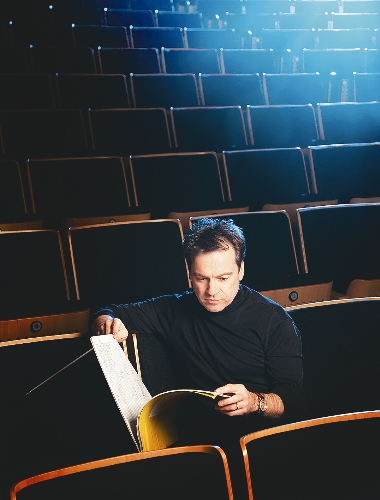

Debra Li
MOST people know of the Berlin Philharmonic, although not as many truly love the music judging by critical reviews. Not many may have heard the Bamberg Symphony Orchestra, but those who have most probably would love it.
“The Berlin Philharmonic is perfect and accurate in every note, but it has no unique character,” said music reviewer Liu Xuefeng. “In contrast, Bamberg, with a history of 64 years, has details, momentum and a unique voice interpreting classical masters as well as contemporary composers.”
On New Year’s Eve and New Year’s Day, the orchestra will perform two concerts at Shenzhen Concert Hall and later in Beijing and Shanghai.
Conducted by the orchestra’s principal conductor Jonathan Nott, the program for Dec. 31 will include music from Wagner’s opera “Tristan und Isolde,” “Symphony No. 40 in G Minor” by Mozart and “Symphony No. 4 in E Minor” by Brahms.
The program for New Year’s Day obliges more to the taste of the general public, including Beethoven’s “Coriolanus Overture,” Dvorak’s “Slavic Dance” and the well-loved Beethoven “Symphony No. 9.”
Chinese audiences have outgrown their love of the Viennese version of a New-Year concert, and this year’s choice by Shenzhen Concert Hall reflects a maturing of taste.
“We want no more ‘The Blue Danube,’ we are thirsty for something fresh,” Liu said. Bamberg’s programs were the choice of serious music fans, especially on New Year’s Eve.
“Brahms ‘Symphony No. 4’ is one of the most challenging and complicated works ever performed. I’m kind of surprised that a touring orchestra — which may lack the appropriate time needed for rehearsal — dares to choose it. But I’m very much looking forward to it,” the reviewer said.
Liu said he has been a fan of Bamberg since first coming upon one of its records published in Taiwan scores of years ago. “The orchestra is an expert in Shubert and Mahler, which demonstrates its thorough understanding of the German music spirit,” Liu said. “They can build a connection between classical and modern periods.”
The Brahms symphony will be a good example, as the composer followed tenaciously the structure of classic symphony while revealing a strong passion that resonates with more contemporary works.
First formed in 1946 mainly by German musicians expelled from Czechoslovakia under the Benes decrees, the symphony orchestra found a home in the small historical German town of Bamberg. The musicians had previously been members of the German Philharmonic Orchestra of Prague.
One of top 10 world symphony orchestras and top five in Germany, it was the first to visit China, in the 1970s, with Tang Muhai then as assistant conductor.
“The voice of Bamberg is fresh, transparent and soothing,” Liu said. “It shares something in common with Stuttgart Radio Symphony Orchestra under the helm of Roger Norrington, classical as well as modern.”
Time: 8 p.m., Dec. 31, Jan. 1
Venue: Shenzhen Concert Hall
Tickets: 180-1,680 yuan
Background
Jonathan Nott, 48, is an English conductor. He was a music student and choral scholar at Cambridge and also studied singing and flute in Manchester at the Royal Northern College of Music. After taking up conducting in London, he left to develop his conducting career in Germany.
Nott made his conducting debut in 1988 at the Opera Festival in Battignano, Italy. In 1989, he was appointed conductor at the Frankfurt Opera. In the following year, he worked with several German orchestras as a conductor and principal conductor until he was appointed to lead the Bamberg Symphony Orchestra in 2000.
With the Berlin Philharmonic, Nott recorded several orchestral works of Gyorgy Ligeti as part of the Teldec contribution to the complete recorded works of Ligeti.
|

